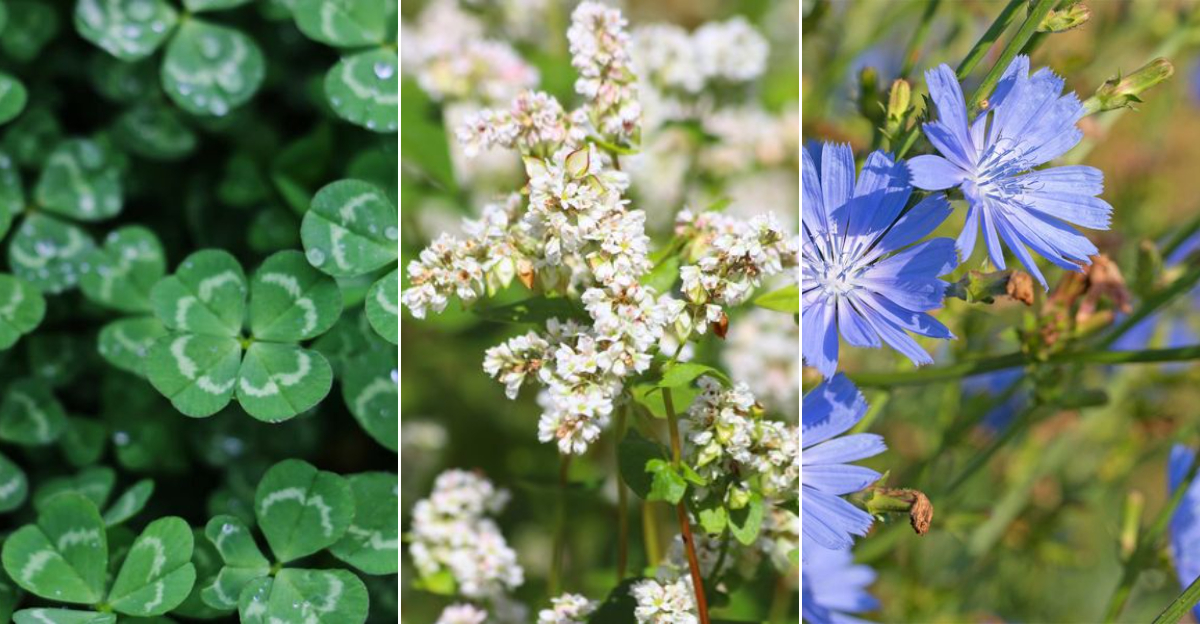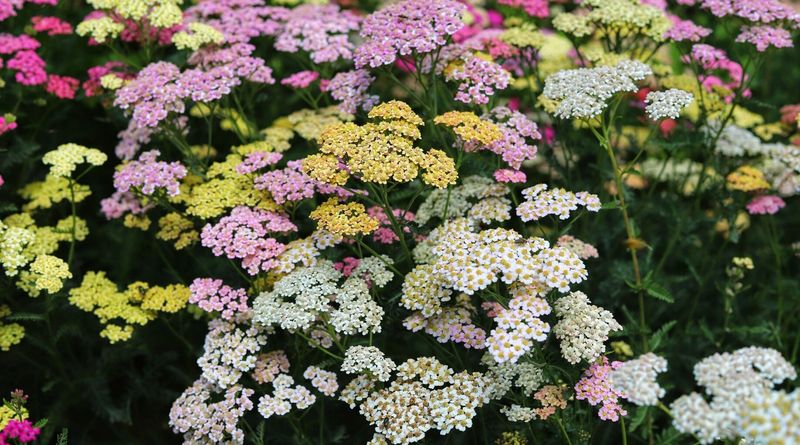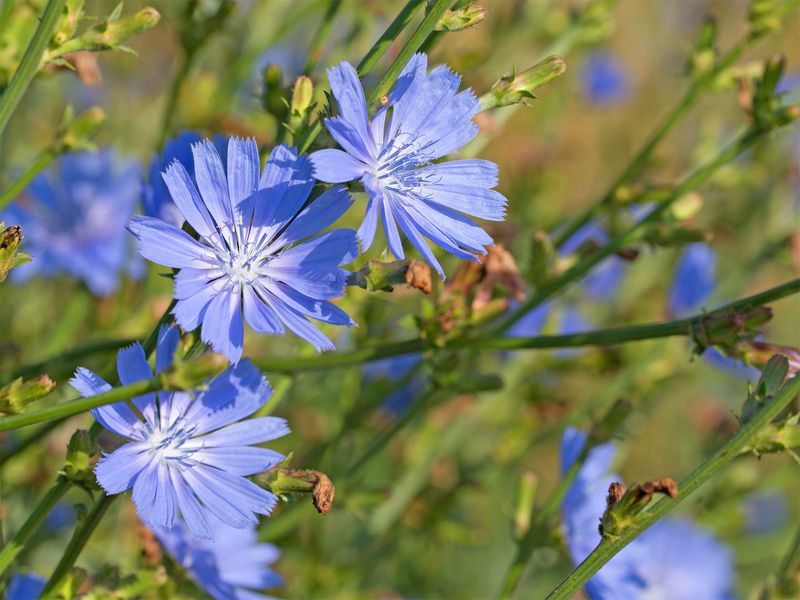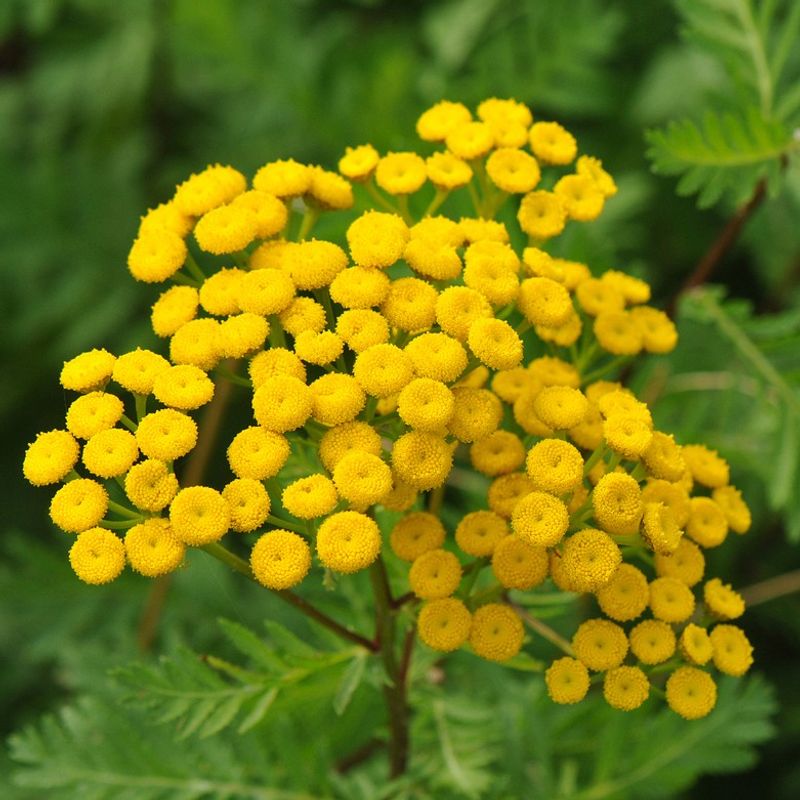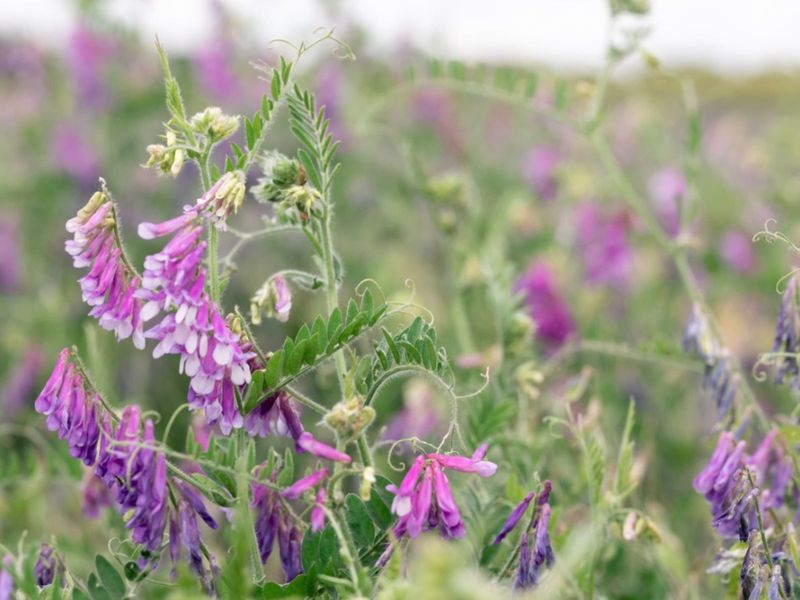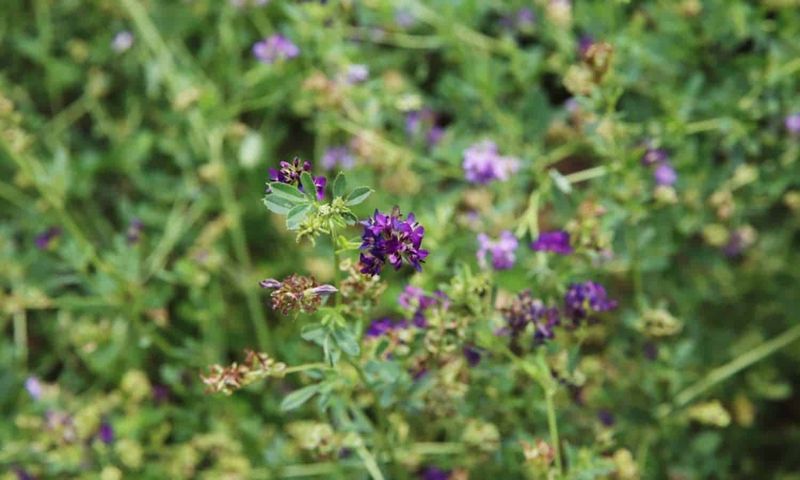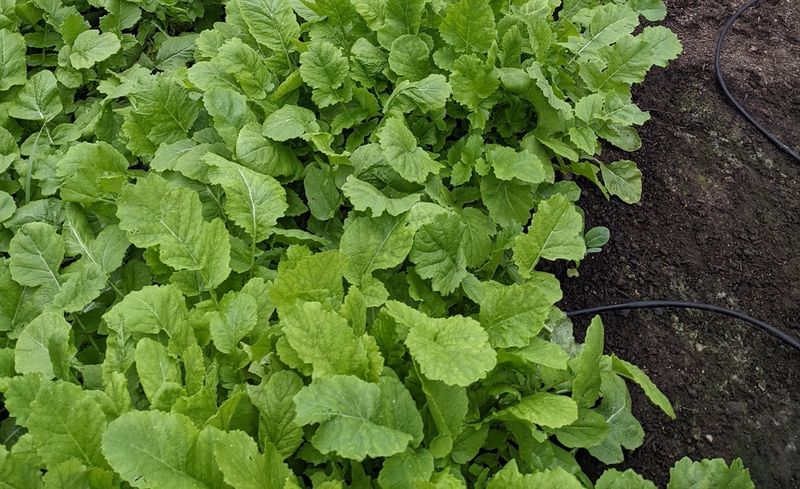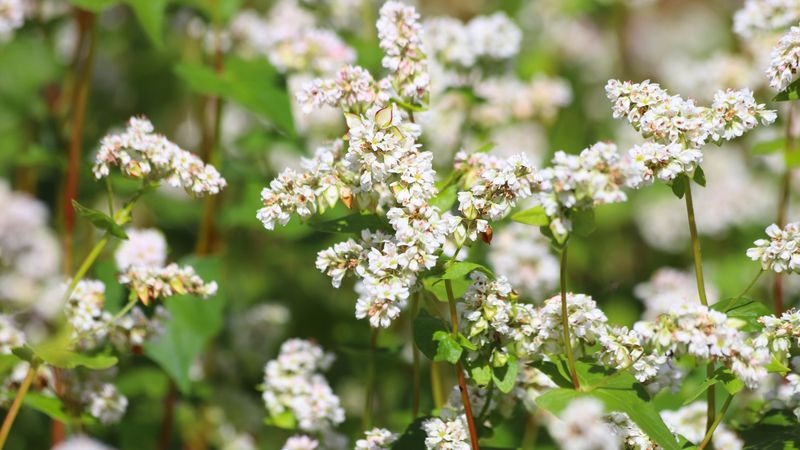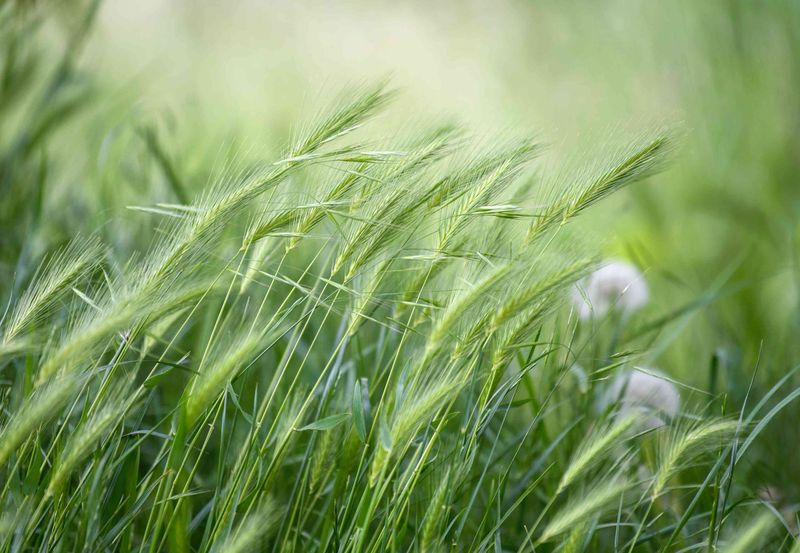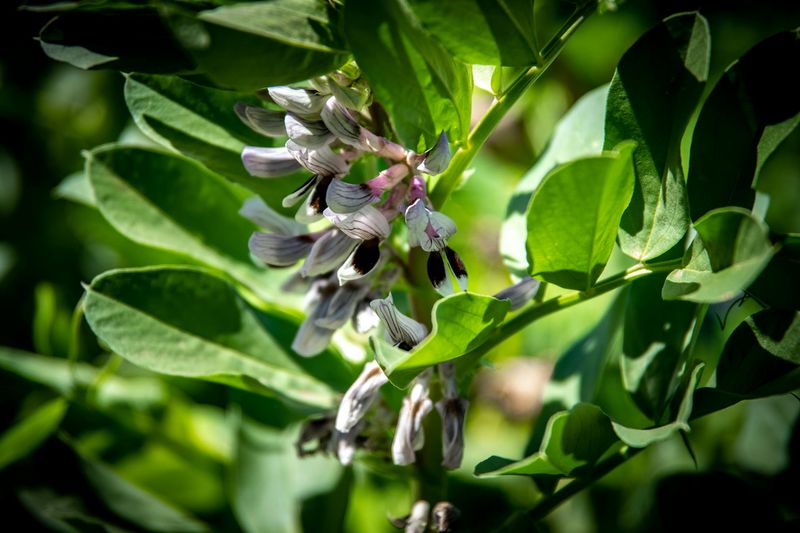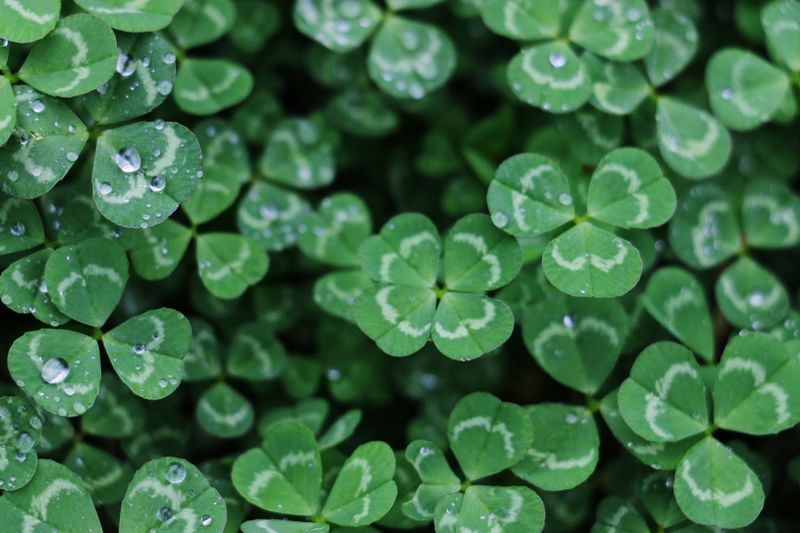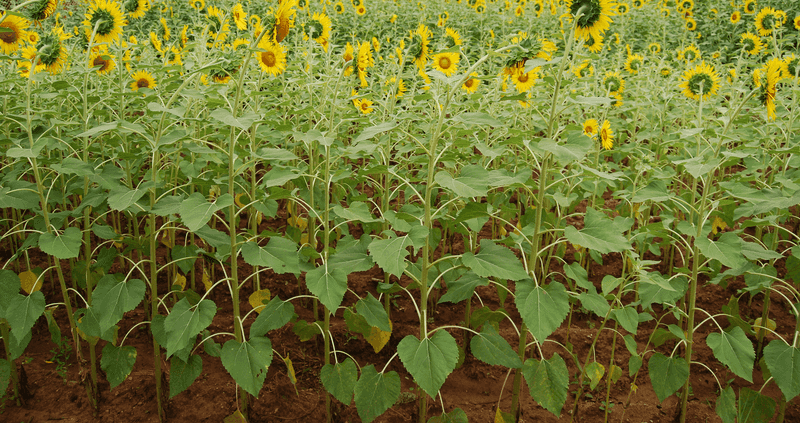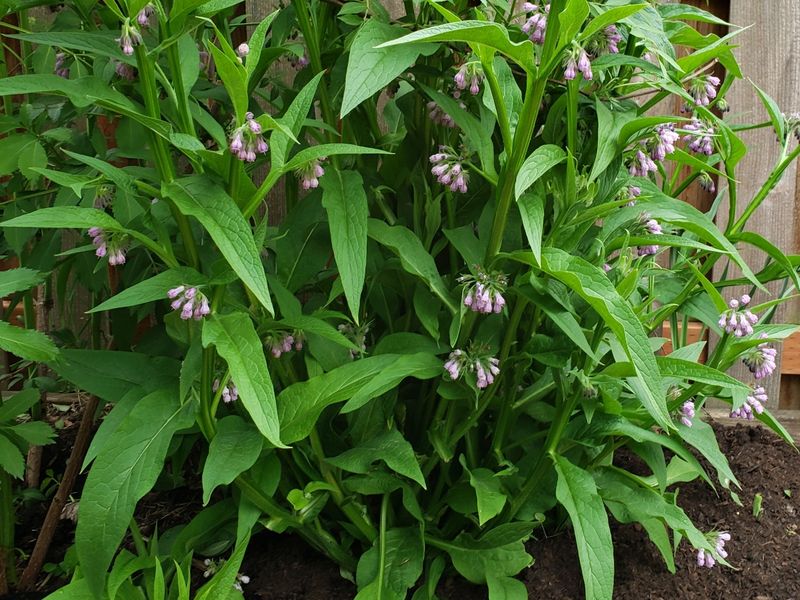Healthy, thriving soil is the foundation of every successful garden and farm. Some plants do more than just grow—they repair, enrich, and transform the very ground they’re rooted in.
These nine remarkable plants enhance soil fertility, structure, and biodiversity, making them powerful allies for anyone looking to improve their land naturally.
1. Yarrow
Yarrow is a hardy perennial that can enhance your garden in more ways than one. Its deep roots help break up compacted soil, allowing for better water infiltration and root growth of neighboring plants.
The feathery leaves of yarrow create a beautiful ground cover, enriching the soil with organic matter as they decompose. Not only does yarrow improve soil structure, but it also attracts beneficial insects, contributing to a balanced ecosystem.
Did you know? Yarrow has been used in traditional medicine for centuries, valued for its healing properties and ability to stop bleeding. By planting this versatile herb, you’re not just improving your soil, but also connecting with a rich history of herbal medicine.
2. Chicory
Chicory is more than just a pretty flower; it’s a soil-transforming powerhouse. The plant’s deep taproots penetrate hard soil, improving aeration and water access for other plants.
As chicory’s roots break through tough soil layers, they bring nutrients closer to the surface, enriching the topsoil. This process not only benefits chicory but also enhances the growth of subsequent crops or plants.
With its vibrant blue flowers, chicory also adds a splash of color to any landscape, making it both a practical and aesthetic choice for gardeners aiming to rejuvenate their soil.
3. Tansy
Tansy is a perennial herb that offers both beauty and soil benefits. Known for its bright yellow flowers, tansy is a natural pest repellent, reducing the need for chemical pesticides in your garden.
The plant’s robust root system improves soil structure by enhancing aeration and drainage. As tansy decomposes, it enriches the soil with organic matter, contributing to increased fertility.
Beyond its soil benefits, tansy has a storied history in traditional medicine and folklore, often used for its insect-repelling properties. Incorporating tansy into your garden not only aids in soil transformation but also connects you to a rich tapestry of historical uses.
4. Hairy Vetch
Hairy vetch is a legume celebrated for its nitrogen-fixing ability, which enriches the soil naturally. Its sprawling growth habit provides excellent ground cover, suppressing weeds and preventing erosion.
Hairy vetch’s deep roots improve soil structure and increase water infiltration. When used as a cover crop, it adds organic matter and enhances microbial activity. Hairy vetch is often planted in combination with other cover crops for a diverse planting strategy.
Its adaptability to various soil types and climates makes it a versatile choice for farmers. The vibrant purple flowers also attract beneficial insects, supporting ecosystem health.
5. Alfalfa
Alfalfa is a perennial legume known for its deep roots that improve soil structure and fertility. Its roots penetrate hardpan layers, facilitating water and nutrient movement.
Alfalfa enriches the soil with nitrogen through its symbiotic relationship with rhizobia bacteria. This natural process reduces the need for synthetic fertilizers. Alfalfa’s thick foliage provides excellent ground cover, suppressing weeds and preventing soil erosion.
It is drought-resistant and adapts well to various soil types, making it a reliable choice for sustaining soil health. Farmers and gardeners value alfalfa for its ability to rejuvenate tired and depleted soils.
6. Daikon Radish
Daikon radish is renowned for its ability to break up compacted soil with its long taproots. These roots penetrate deeply, improving soil structure and drainage.
After harvesting, the decomposing roots add organic matter and create channels for air and water movement. This process enhances the soil’s ability to retain moisture and nutrients.
Daikon radish is also used in crop rotation to manage pests and diseases. Its rapid growth effectively suppresses weeds, making it a valuable cover crop. With minimal maintenance required, daikon radish is an efficient and effective tool for soil transformation.
7. Buckwheat
Buckwheat is a fast-growing cover crop that improves soil structure and fertility. Its roots break up compacted soil, allowing for better water infiltration and aeration.
As a green manure, buckwheat’s biomass enriches the soil with organic matter when tilled under. It is also effective at suppressing weeds due to its rapid growth. Buckwheat’s flowers attract pollinators, adding biodiversity to agricultural landscapes.
This plant thrives in poor soil conditions, making it ideal for land reclamation projects. Its ability to grow quickly and improve soil makes it a popular choice among eco-conscious farmers and gardeners alike.
8. Rye
Rye is a hardy grain crop known for its soil-enhancing properties. Its extensive root system stabilizes soil, preventing erosion and improving structure. Rye is effective in suppressing weeds due to its rapid growth and dense canopy.
As a cover crop, it adds organic matter to the soil, enhancing fertility and microbial health. Rye is versatile and grows well in poor soil conditions, making it suitable for reclamation projects.
It can also be used in crop rotation to manage pests and diseases. Its resilience and soil-improving qualities make rye a staple in sustainable agriculture.
9. Fava Beans
Fava beans are a valuable legume for soil transformation. They fix nitrogen, enriching the soil naturally and reducing the need for chemical fertilizers. Fava beans’ dense foliage provides excellent ground cover, suppressing weeds effectively.
Their roots improve soil structure by enhancing aeration and drainage. When used as a cover crop, they add organic matter and increase microbial activity in the soil.
Fava beans are hardy and adapt to various growing conditions, making them a versatile choice for gardeners. Their ability to improve soil health while providing a nutritious crop makes them a dual-purpose asset.
10. Clover
Clover is celebrated for its ability to fix nitrogen in the soil. This process enhances soil fertility without the need for chemical fertilizers. Clover’s dense foliage helps suppress weeds, providing a natural ground cover.
It is particularly useful in lawn care, reducing the need for mowing and chemical treatments. Clover thrives in a variety of soil types and is drought-resistant, making it a versatile choice for different climates.
Its flowers attract beneficial insects, promoting a healthy ecosystem. Whether used in cover cropping or as part of a garden, clover is a valuable ally for soil transformation.
11. Sunflowers
Sunflowers are more than just a pretty face in the garden. Their deep-rooting system helps break up compacted soil and improve drainage. As they grow, sunflowers add organic matter to the soil, enriching it naturally.
Their tall stalks provide shade and wind protection for other plants. Sunflowers are also known for their phytoremediation properties; they can remove toxic elements like lead and arsenic from the soil.
This makes them an excellent choice for soil remediation projects. With their cheerful appearance and practical benefits, sunflowers are a delightful addition to any garden focused on soil health.
12. Comfrey
Comfrey is a powerhouse plant known for its deep-rooting system. These roots draw up nutrients from deep within the soil, making them available to other plants. Comfrey’s leaves can be used as a natural fertilizer when composted or used as a mulch.
This dual purpose makes it a favorite among permaculture enthusiasts. Planting comfrey near other crops can boost their growth and vitality. Despite its hardiness, comfrey requires well-drained soil to flourish.
Its beautiful purple flowers also attract pollinators, adding biodiversity to your garden. However, it can be invasive, so it’s best planted in controlled areas.
